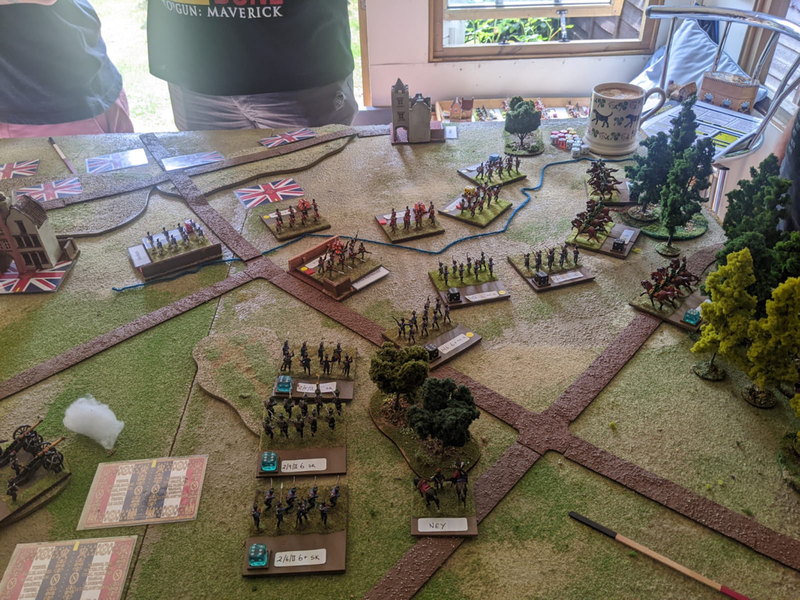|
I have just finished this book in the Osprey Elite series about World War 2 Infantry tactics. I bought it to be an introduction to small unit tactics after we started playing Bolt Action this year. I found the book a clear and easy read, but it doesn't quite do what it says on the cover. It only discusses the armies of Germany, the USA and Great Britain. There is nothing about the USSR, France, Italy or any other nation, which was disappointing. But the three armies included are dealt with in some detail. It is interesting to learn how they each trained their recruits and the author talks a fair bit about general principles at section/squad and platoon levels. He also explains how the tactics of all combatants came to resemble each other more closely as the war progressed. There are some interesting diagrams showing typical formations and positions. Is it possible to recreate the tactics of these formations with the Bolt Action rules? To some extent I guess. But I think the main problem is with the use of section LMGs. The book explains how the LMG team often operated, separately but in concert with the rest of the section (e.g. creating a fire base to cover an approach to assault). It also explains how the US squad would sometimes break down into two or even three teams, all working independently. As the army lists work, it would be difficult to represent such a break down. But I suppose there is nothing to stop players agreeing a house rule to provide LMG teams with their own dice. Other tips from the book that sound pretty straightforward to transfer to the table include not exposing troops to unnecessary risk; avoiding exposed positions; deploying smoke to mask advances; and committing totally to an assault once begun. All these seem worth a try on the table, although I'm sure I t's easier to quote a principle than apply it.
When we played a skirmish between Late War Germans and Royal Marine commandos on Friday evening, I put several feet wrong (well, at least three). The preliminary bombardment was especially effective against my Germans. Instead of rallying off pins, I decided to give movement orders and take morale tests, which proved disastrous. One veteran squad failed its order test twice and on the second time it rolled a FUBAR and ran away. My hanomag also failed to move twice in a row and an MMG team lost its nerve in the middle of a field. Next time, I will rally off the effects of a preliminary bombardment at the start of the game. Another bitter lesson was not going down when fired upon at close range by a section of Royal Marines. My German squad, in soft cover but with no other protection, promptly lost over half its men and then failed its morale test. Next time, I will need a very good reason not to go down. Of course, next time I will most likely either forget the lessons from this game or make some new mistakes! That's the fun of a ruleset like Bolt Action: it's easy to learn the rules, but much harder to master them.
2 Comments
Nick Pendrell
24/11/2016 10:21:58 pm
I have come to the same conclusion as you. Unfortunately Bolt Action is a game rather than a simulation. I had hoped that they had fixed the rules for smoke in v2, for example. But they did not change them. There is still an 83% chance that it will turn up exactly where your opponent wants it to go rather than you. Having it scatter would be fine - but I can't believe that any team is quite that useless.
Reply
Tim Simmons
24/11/2016 11:33:48 pm
I certainly will try Chain of Command. But like you I do enjoy Bolt Action a lot and our group is still having fun building our forces.
Reply
Leave a Reply. |
Archives
November 2023
Categories
All
|





 RSS Feed
RSS Feed